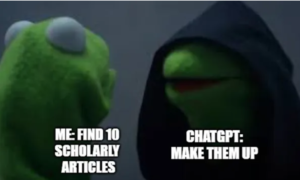The digital world is a dynamic and ever-evolving space that influences how we interact, learn, and teach. As educators, we must consider our role in navigating and integrating digital culture into educational settings, both for our own professional growth and to guide students in becoming critical, informed participants in a digital society.
The Role of Memes in Education

Memes have become a dominant form of communication, often conveying complex ideas through humor and relatability. While they are often dismissed as trivial, memes have the potential to enhance learning in several ways. They can serve as powerful tools for engagement, making abstract or challenging concepts more accessible to students. (I don’t just mean my “deadly moms” Instagram group either, were we share memes back and forth as communication! Deadly Moms Shirts) Additionally, memes encourage students to think critically about media and representation, providing opportunities for discussions on interpretation, audience, and intent.

(https://www.academyoflearning.com/)

https://www.boredpanda.com/funny-college-memes-humor-state-university/
By incorporating memes into the classroom, educators can create a more relatable and culturally relevant learning environment. I find memes especially helpful for allowing students to see themselves with relatable content that they may have been thinking about in their heads but had not stated out loud. Being a literacy consultant I find this especially encouraging because I ask myself what features of a good book might I look for when selecting something for my students. Anything relatable to their life situation. Students need to see and feel themselves in the work for that work to truly “hit home” with them.
Participatory Culture and Knowledge Construction

(https://markmcneilly.substack.com/p/the-best-memes-about-ai)
Platforms such as TikTok, YouTube, and Wikipedia empower users to create, remix, and share content, reflecting the shift toward participatory culture. This transformation challenges traditional notions of knowledge, as authority is no longer limited to formal institutions. Instead, knowledge becomes dynamic, shaped by collective contributions. In the field of education, this raises essential questions: How do we define expertise? How do we validate sources? Help me answer these questions in the comments! Encouraging students to critically engage with user-generated content fosters digital literacy, helping them navigate the vast array of available information while recognizing bias, credibility, and context.

(AI Care from https://www.monkeyuser.com/
Addressing Misinformation and AI-Generated Content
The rapid spread of information, coupled with the rise of AI-generated content, presents challenges for educators in cultivating critical thinking skills. Misinformation can shape perceptions and influence decision-making, making it crucial for students to develop the ability to evaluate sources effectively. Educators can support this by integrating media literacy into curricula, teaching students to assess credibility, identify bias, and cross-check information. Additionally, discussions around AI-generated content can help students understand its potential and limitations, fostering ethical considerations regarding its use in academia and beyond. The Link above is going to bring you to the Sask Digitial citizenship curricula online version. Teachers may find this helpful in their search for resources to help them teach this complex yet crucial topic.
Embracing the Digital Shift
As educators, embracing the digital shift means recognizing the evolving ways students engage with information and communication. Rather than resisting new digital trends, we can harness them to foster deeper learning experiences. By integrating memes, participatory culture, and critical digital literacy into our teaching practices, we empower students to navigate the digital world responsibly and thoughtfully.

(https://markmcneilly.substack.com/p/the-best-memes-about-ai)
The digital age presents both challenges and opportunities for education, but with intentional strategies, educators can ensure that students are not just passive consumers of digital content but active, informed participants in shaping the future of knowledge and learning.
What does some of the research state?
To help understand the good, bad and ugly of Memes in our society and specifically education settings, I read, “The Light and Dark Side to Memes: Understanding the Impact of Memes on Mental Health” mindsnews.ca. It’s essential to recognize that while memes can enhance learning by making content more relatable and engaging, they also carry potential risks. The article highlights that memes can serve as collective coping mechanisms, helping individuals bond over shared experiences and let go of stress through humour. However, it also points out that the impact of memes isn’t universally positive; for some individuals, especially those struggling with emotional regulation, exposure to certain memes can worsen negative feelings or depressive symptoms.
As educators, it’s crucial to be mindful of these dual effects when integrating memes into educational spaces. While they can be valuable tools for engagement and relatability, we must ensure that the content is appropriate and consider the diverse backgrounds and sensitivities of our students. By doing so, we can harness the positive aspects of memes to enhance learning while mitigating potential negative impacts on student well-being.
Akil, A. M., Ujhelyi, A., & Logemann, H. N. A. (2022). Exposure to Depression Memes on Social Media Increases Depressive Mood and It Is Moderated by Self-Regulation: Evidence From Self-Report and Resting EEG Assessments. Front Psychol, 13, 880065. https://doi.org/10.3389/fpsyg.2022.880065
Akram, U., & Drabble, J. (2022, 09/27). Mental Health Memes: Beneficial or Aversive in Relation to Psychiatric Symptoms? Humanities and Social Sciences Communications, 9. https://doi.org/10.1057/s41599-022-01381-4
Akram, U., Drabble, J., Cau, G., Hershaw, F., Rajenthran, A., Lowe, M., Trommelen, C., & Ellis, J. G. (2020, 2020/01/21). Exploratory study on the role of emotion regulation in perceived valence, humour, and beneficial use of depressive internet memes in depression. Scientific Reports, 10(1), 899. https://doi.org/10.1038/s41598-020-57953-4
Myrick, J. G., Nabi, R. L., & Eng, N. J. (2022). Consuming memes during the COVID pandemic: Effects of memes and meme type on COVID-related stress and coping efficacy. Psychology of Popular Media, 11(3), 316-323. https://doi.org/10.1037/ppm0000371
(edited with Chatgpt)

I completely agree with your perspective on how digital culture is influencing education, especially with the role of memes in the classroom. It’s really interesting how memes, often seen as trivial, can actually be powerful tools for enhancing learning and promoting critical thinking. By breaking down complex ideas into relatable and humorous content, memes make it easier for students to engage with challenging material. I also appreciate your point about students needing to see themselves reflected in what they’re learning. Memes can help bridge that gap and make education feel more personal and relevant to their everyday lives.
Your thoughts on participatory culture are also spot on. With platforms like TikTok, YouTube, and Wikipedia, knowledge has shifted from being controlled by traditional institutions to being shaped by collective contributions. This shift is empowering, but it also challenges us to rethink what it means to be an expert. Encouraging students to engage critically with user-generated content helps them navigate the overwhelming amount of information online and discern bias, which is essential in today’s digital age.
I also appreciate how you’ve highlighted the challenges of misinformation and AI-generated content. It’s essential for educators to teach students how to evaluate sources, check for credibility, and think critically about the content they encounter. Balancing the positive aspects of digital culture with the potential drawbacks, such as the spread of false information and its impact on mental health, is a delicate task. The fact that memes can have both positive and negative effects on student well-being is something we need to keep in mind when incorporating them into our teaching practices.
Overall, embracing digital culture in education allows us to create more dynamic and engaging learning experiences. It’s about giving students the tools not only to consume information, but also to participate in shaping their own knowledge and understanding of the world. Great insights!
Karissa 🙂
Fantastic and thorough blog post Shasta. The memes along the way provided a great example of they can enhance content or engage a reader. I respect your stance on participatory culture and how with intentional strategies and expectations, we can prepare our learners for the ever-evolving world, and workforce they will one day enter. Lastly, I’m curious what you have your students using AI for currently?